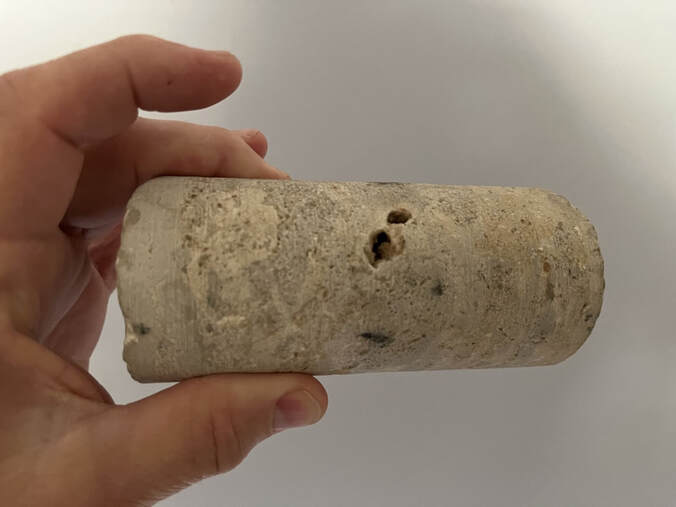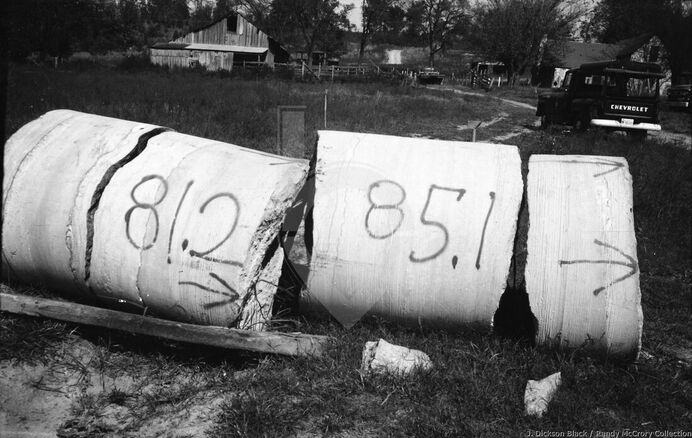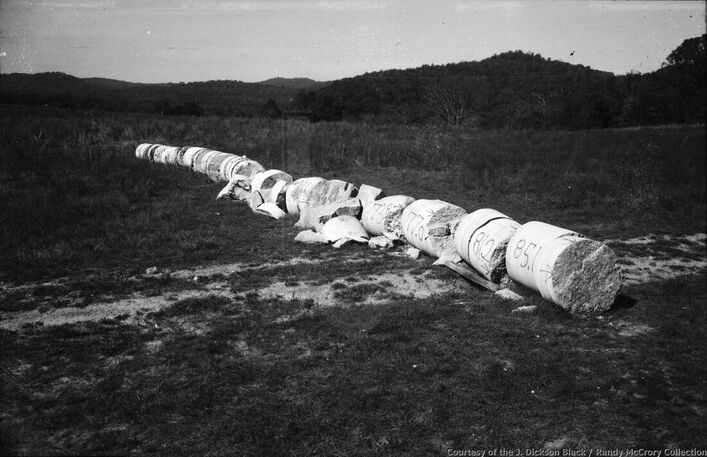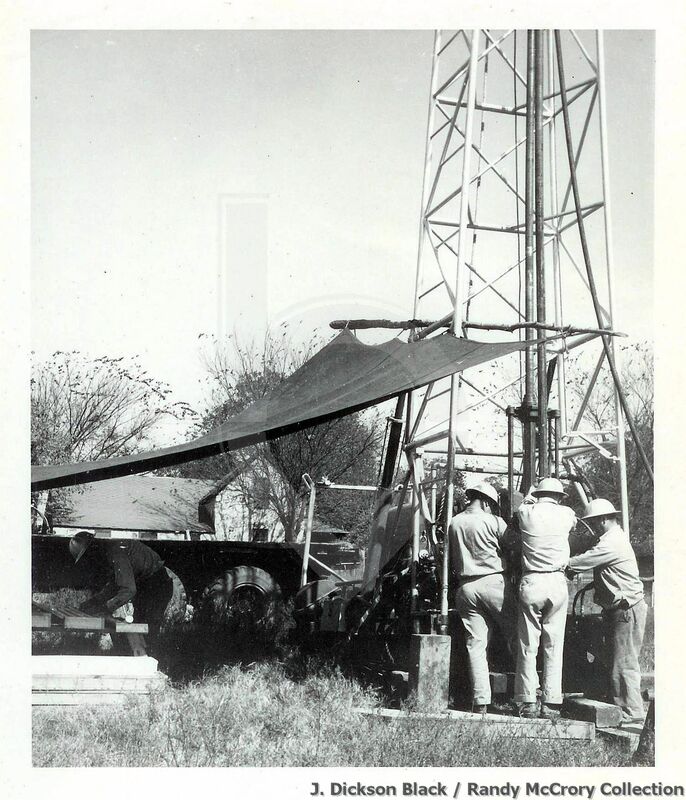Drilling for Footings For Beaver Dam
Article By J. Dickson Black (circa 1960)
Article By J. Dickson Black (circa 1960)
Have you ever tested the ground before you put your foot down, just to make sure it would hold you up? How long did it take you? Not as long as a footing test that is going on along the banks of the White River just west of Rogers, Arkansas.
The Army Engineers have been testing, drilling holes, and taking core samples for the past 18 months just to find the best place to put a foot down. Of course there will be a little weight on this footing. It is for Beaver Dam.
Beaver Dam will be the third in the interlocking White River series. It will hold a lake of 30,000 acres of water. The other two dams are Bull Shoals in Arkansas and Table Rock in Missouri.
The dam will be almost the same size as Table Rock Dam at Branson, Missouri, and will take about the same time to build. It took three and a half years for the construction and one and a half more to install the power and other installations. So about five years from the starting date this dam should be finished.
It is said that the road work and the office and work building will be started this spring, but there has been no date set for the beginning of the dam itself.
The Army Engineers have been testing, drilling holes, and taking core samples for the past 18 months just to find the best place to put a foot down. Of course there will be a little weight on this footing. It is for Beaver Dam.
Beaver Dam will be the third in the interlocking White River series. It will hold a lake of 30,000 acres of water. The other two dams are Bull Shoals in Arkansas and Table Rock in Missouri.
The dam will be almost the same size as Table Rock Dam at Branson, Missouri, and will take about the same time to build. It took three and a half years for the construction and one and a half more to install the power and other installations. So about five years from the starting date this dam should be finished.
It is said that the road work and the office and work building will be started this spring, but there has been no date set for the beginning of the dam itself.
This is the main office headquarters for the Corp of Engineers at the Beaver Dam site upon completion.
Testing for a footing for a structure like Beaver Dam is a big job and takes a long time. The test dates back in the thirties when they started making plans for the dams on the White River. At this time they made aerial pictures of the river and picked the best three or four spots from this. Then they had to test the ground and go over it to find the best location.
The last 18 months they have been drilling and taking core tests to find the most ideal footing. The first tests were three inch holes about 80 to 85 feet deep. Then they put down three, three foot holes 85 feet deep.
The last 18 months they have been drilling and taking core tests to find the most ideal footing. The first tests were three inch holes about 80 to 85 feet deep. Then they put down three, three foot holes 85 feet deep.
This is actually a piece of one of those three inch footing holes that were drilled.
This calyx coring is taken out of the hole in five foot lengths. These are laid out end to end like a fallen column of an old temple, and just as important.
These are photos of those three foot wide core samples taken at the Beaver Dam site.
Mr. Gene Palmer, the project geologist in charge of the field explorations, has to check each section as it comes out, then go down in the hole and test the wall from top to bottom and back up.
Samples are also taken of the ground from the time the hole is started until they hit rock. These are tested by soil specialists in the field as well as in laboratories the same as the rock is.
There are two motives in the making of these tests. One is to find the best footing for the dam. Second, they give all of their findings to the construction companies so they will know about how much work will need to go into the building of the dam. and then it will help them in their bid on the work.
If they find cracks deep in the ground these have to be fixed, and they can't overlook things because there will be a terrific pressure against the dam when the lake is full. The dam will be over a mile long and 240 feet high at the highest point.
Samples are also taken of the ground from the time the hole is started until they hit rock. These are tested by soil specialists in the field as well as in laboratories the same as the rock is.
There are two motives in the making of these tests. One is to find the best footing for the dam. Second, they give all of their findings to the construction companies so they will know about how much work will need to go into the building of the dam. and then it will help them in their bid on the work.
If they find cracks deep in the ground these have to be fixed, and they can't overlook things because there will be a terrific pressure against the dam when the lake is full. The dam will be over a mile long and 240 feet high at the highest point.
Beaver Dam - Group of workers taking calyx core sample from the dam site





